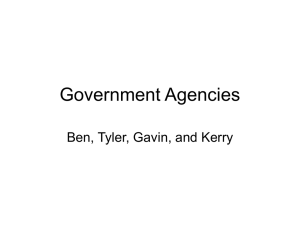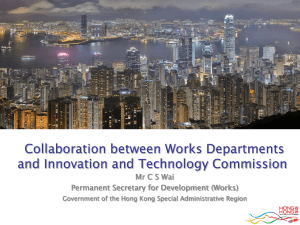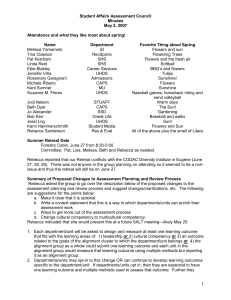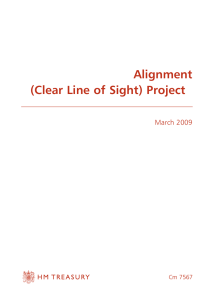Knowledge Brokers: The Educational Interlopers
advertisement
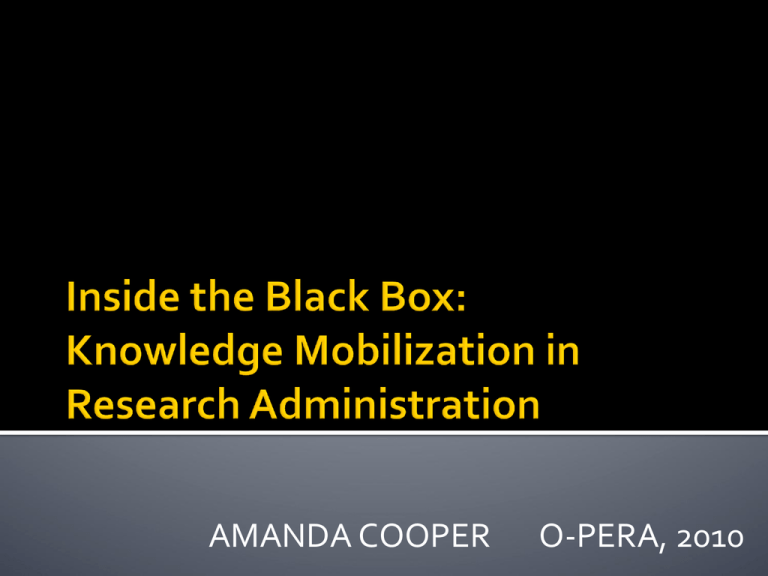
AMANDA COOPER O-PERA, 2010 Information (data, facts, context) Explicit (concepts, processes, procedures, principles) Tacit (experience, subjective judgement, doing/action) Knowledge conversion (socialization, codification combination) Purpose? System improvement What knowledge? Research knowledge, local knowledge, professional knowledge KM Processes? Social, iterative, multidirectional Who is involved in KM? 2 or more different groups F U N D I N G A G E N C I E S U N I V E R S I T I E S I N T E R M K E M D I A R I E S MINISTRIES OF EDUCATION •Policies •Processes •Resources SCHOOLS DISTRICTS COMMUNITY PROFESSIONAL ORGANIZATIONS MEDIA BETWEEN ORGS & Levels of Leadership Different Departments Different Professional Roles •Outcomes WITHIN ORGS KM INTERMEDIARIES: THE MISSING LINK 1. 2. 3. 4. Identify organizational/ departmental needs Inventory of existing structures (people, tasks, tools) How does knowledge flow (or fail to) between personnel, departments, outside organizations? Mapping KM across organization/ department can help to identify assets, show gaps, and highlight areas for improvement Organizational knowledge exists in: People, tools, tasks Roles or organizational structures Processes, Procedures Technological structures Culture Knowledge can be transferred many ways: Member-member, member-tool, membertask, task-tool, and so on PROBLEM GAP Dearth in knowledge Knowledge Gap Information Overload Needle-in-a-haystack No ways to find, share knowledge Infrastructure Gap Lack of research literacy or skills Skills Gap Resistance despite evidence Behavior Gap Lack of Interaction Silos Gap Lack of understanding despite interaction Communication Gap Contradictory views, results in competing choices Alignment Gap Source of Problem unknown Outcome Gap Problem known, need successful model or 3rd party Expertise Gap Time Resources Training Consensus Infrastructure Policies Technology “know how” Designated roles leadership Awareness Alignment Money Professional development Mentorship Systems Sustainability Communication Clear goals Products (fact sheets, process maps, how-to guides) Events (professional learning communities, conferences, speakers, professional development) Networks (between departments, organizations at the local, national and international levels) GAP KM Strategy Knowledge or Tracking gap Needle-in-ahaystack; Infrastructure gap Awareness gap; skills gap; knowhow gap Alignment gap; Behaviour gap; Attitude gap Silos gap Conducting new research; earmarking funding/grants for research on priority topics Searchable research databases; utilizing technology to share research (shared space, wikis, listservs) Linkage frequency gap Communication gap Outcome gap Policy gap Plan an information campaign; circulate relevant materials; professional development sessions; in-service coaching This requires multiple strategies: policies and training to effect change; building shared direction and understanding through dialogue Building networks and teams across diverse departments within the system Scheduling and coordinate meetings, preparing relevant materials, elists Cultivating knowledge about demands of different roles; teaching necessary skills Tools to assess organizational strengths and weaknesses surrounding KM Put policies in place for KM strategies to be planned AMANDA.COOPER@UTORONTO.CA


